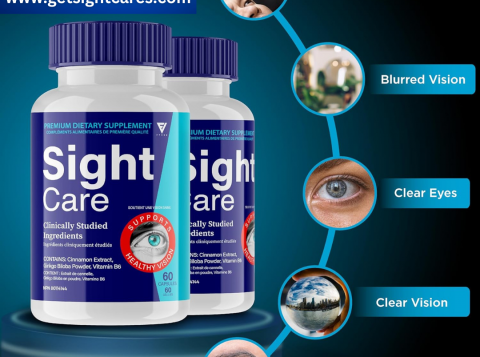
Life-Saving Drugs: Essential Medica
In modern medicine, life-saving drugs play a crucial role in managing and curing diseases that were once considered untreatable. These medications have revolutionized healthcare by significantly reducing mortality rates, improving quality of life, and increasing survival chances for millions of patients worldwide. From antibiotics to cancer treatments, vaccines to cardiovascular drugs, these pharmaceutical breakthroughs have transformed the medical landscape.
1. The Evolution of Life-Saving Drugs
The history of life-saving drugs dates back centuries, with early civilizations using natural remedies for healing. However, the advent of modern medicine in the 20th and 21st centuries led to the discovery of groundbreaking medications that have since saved countless lives. The development of antibiotics, vaccines, and chemotherapy drugs has been particularly instrumental in combating deadly diseases. Advances in biotechnology, genetic engineering, and personalized medicine have further refined these treatments, making them more effective and accessible. Lapatinib manufacturer by Novartis and was originally developed by GlaxoSmithKline for treating certain types of breast cancer.
2. Antibiotics: The Game-Changer in Infectious Diseases
One of the most revolutionary classes of life-saving drugs is antibiotics. Before their discovery, bacterial infections such as pneumonia, tuberculosis, and sepsis were often fatal. The introduction of penicillin by Alexander Fleming in 1928 marked the beginning of the antibiotic era. Since then, drugs like amoxicillin, erythromycin, and cephalosporins have played a vital role in treating bacterial infections.
However, the misuse and overuse of antibiotics have led to antibiotic resistance, posing a significant threat to global health. Researchers continue to develop new antibiotics to combat resistant strains of bacteria and prevent the resurgence of deadly infections.
3. Vaccines: Preventing Deadly Diseases Before They Start
Vaccines are among the most effective life-saving interventions in medical history. They work by stimulating the immune system to recognize and fight specific pathogens before they can cause serious illness. Vaccines have eradicated or controlled deadly diseases such as smallpox, polio, and measles, saving millions of lives.
The development of COVID-19 vaccines in record time demonstrated the power of modern scientific advancements. mRNA vaccines, such as those developed by Pfizer-BioNTech and Moderna, showcased innovative technology that can be used for future infectious disease prevention.
4. Cancer Treatments: Fighting a Global Killer
Cancer remains one of the leading causes of death worldwide, but advancements in oncology drugs have significantly improved survival rates. Chemotherapy, targeted therapy, immunotherapy, and hormone therapy are among the key treatments that help patients battle various forms of cancer.
Drugs like etoposide, doxorubicin, and cisplatin have been instrumental in chemotherapy regimens, while newer treatments such as pembrolizumab (Keytruda) and nivolumab (Opdivo) use the body’s immune system to fight cancer. Personalized medicine, where treatments are tailored to a patient’s genetic profile, is also changing the landscape of cancer care.
5. Cardiovascular Drugs: Preventing Heart Attacks and Strokes
Heart disease is a leading cause of death globally, but life-saving cardiovascular drugs have significantly reduced mortality rates. Medications like statins (atorvastatin, simvastatin) help lower cholesterol, while anticoagulants (warfarin, heparin) prevent blood clots that can lead to strokes and heart attacks.
Beta-blockers, ACE inhibitors, and diuretics are also essential in managing hypertension and heart failure. These medications have collectively transformed cardiovascular care, allowing patients to live longer and healthier lives.
Read more: Specialitymedz
6. Antiretroviral Therapy: Turning HIV into a Manageable Condition
HIV/AIDS was once considered a death sentence, but the introduction of antiretroviral therapy (ART) has changed that narrative. Drugs such as tenofovir, efavirenz, and dolutegravir help suppress the virus, allowing patients to live long, healthy lives.
ART not only improves individual health but also reduces the risk of HIV transmission, playing a crucial role in controlling the global HIV epidemic. Continued research into HIV vaccines and potential cures remains a priority for medical scientists.
7. Insulin: A Lifeline for Diabetics
Diabetes is a chronic disease that affects millions of people worldwide. For those with type 1 diabetes and some with type 2 diabetes, insulin is a life-saving drug that helps regulate blood sugar levels. The discovery of insulin in 1921 by Frederick Banting and Charles Best transformed diabetes from a fatal condition into a manageable one.
Modern insulin formulations, including rapid-acting, long-acting, and combination insulins, provide better blood sugar control. Research into artificial pancreas systems and stem cell therapies continues to advance diabetes treatment.
8. Emergency Drugs: Saving Lives in Critical Situations
Certain drugs are essential in emergency situations where immediate medical intervention is required. Epinephrine, for example, is a life-saving drug used to treat severe allergic reactions (anaphylaxis). Naloxone is another crucial medication that reverses opioid overdoses, saving thousands of lives amid the ongoing opioid crisis.
Other emergency drugs include atropine (for cardiac arrest), nitroglycerin (for angina), and activated charcoal (for poisoning cases). These medications are critical in emergency medicine and first aid settings.
9. Organ Transplantation Drugs: Preventing Rejection
For patients undergoing organ transplants, immunosuppressive drugs are essential to prevent organ rejection. Medications like cyclosporine, tacrolimus, and mycophenolate mofetil help suppress the immune system, allowing transplanted organs to function properly.
Without these drugs, the body would recognize the transplanted organ as a foreign object and attack it, leading to failure. Advances in transplant medicine and immunosuppression have significantly improved transplant success rates.
10. Future of Life-Saving Drugs: Innovations and Challenges
The future of life-saving drugs is filled with promising innovations, including gene therapy, regenerative medicine, and precision medicine. Scientists are working on new treatments for previously incurable diseases, such as Alzheimer’s, Parkinson’s, and certain genetic disorders.
However, challenges remain, including drug affordability, accessibility, and the rise of antibiotic resistance. Global efforts are needed to ensure that life-saving medications are available to all who need them, regardless of socioeconomic status.
Conclusion
Life-saving drugs have revolutionized healthcare, providing hope and healing to millions worldwide. From antibiotics to cancer treatments, cardiovascular drugs to emergency medications, these pharmaceutical breakthroughs continue to extend and improve lives. As science and technology advance, the future of medicine holds even greater potential for new life-saving discoveries that will shape the health and well-being of future generations.

















